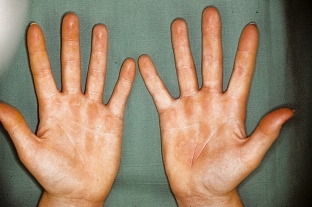Modern studies have shown that among the main causes of contact dermatitis, metal allergy is the most common. It was noted that the leading role in the development of such dermatitis belongs to contacts with nickel. Due to the widespread use of nickel, which is found in many household items and foodstuffs, nickel allergy is very common and causes a lot of trouble for patients. Everyone needs to know the symptoms of a metal allergy in order to contact a specialist for help in time. What are the symptoms of a metal allergy, find out at estet-potral.com.
What household items cause metal allergy symptoms?
The first report that nickel was the cause of the symptoms of metal allergy appeared as early as 1933. Doctors began to diagnose nickel allergy much more often after the introduction of standard patch tests into clinical practice. The largest increase in contact dermatitis on nickel was recorded in the 1990s. in almost all European countries, especially in Scandinavia. Scientists attribute this fact to a high exposure to nickel, which enters the body through skin contact with jewelry, jewelry, due to poor workplace hygiene, and professional factors.
Nickel contact dermatitis is considered by some authors as an autosomal disease, the symptoms of which are read further on estet-portal.com. More than 80% of these children have a positive family history in the 1st generation, and among 1546 pairs of twins born in Denmark, the concordance was 60%.
Causes and mechanism of development of metal allergy symptoms:
- Nickel is found in many common household items such as coins, keys, cufflinks, watches, belts, etc.
- Depending on the oxidation processes, nickel ions are able to form compounds with other metals (for example, with Fe, Mg, Zn, Mn), thereby inducing or reducing the inflammatory response in the body.
- In addition, modern fashion (piercing), orthodontic and dental interventions using nickel-containing devices also exacerbate the body's sensitization to this metal and contribute to the development of metal allergy symptoms.
Prevalence of metal allergy symptoms. The role of nickel in the development of allergies
Nickel contact dermatitis most commonly affects adolescents and females. A rather high percentage of patients with nickel allergy occurs among patients with eczema hands
Please be aware that individuals with metal allergies should tell their doctor if they have a metal allergy when they see an orthodontist or dentist.
The fact is that steel is widely used in orthodontics, which most often contains metals such as chromium, nickel, molybdenum, iron, and magnesium. Nickel is released from metal posts, plates, and orthodontic breats upon contact with saliva, and constant contact of the oral mucosa with such saliva can cause extradental changes in sensitized patients.
Although the symptoms of metal allergy may be associated with different materials from which nickel is released differently, it is believed that the individual properties of saliva play a role here, affecting the chemical processes of metal metabolism.

What are the symptoms of a metal allergy?
During the symptoms of metal allergy, 2 phases can be distinguished: sensitization and clinical manifestation. Sensitization does not necessarily lead to the development of allergic contact dermatitis. Prolonged skin contact with a hapten (a small molecular weight chemical) causes the activation of antigen-presenting Langerhans cells and the transport of hapten-specific T cells to the lymph nodes, followed by the production of inflammatory mediators and symptoms of metal allergy. However, from the moment of skin contact with the allergen until the first clinical manifestations of dermatitis appear, it can take from several days to a month or more.
Acute reaction to nickel may present with erythema, pruritic papules, vesicles, bullous rash, while chronic KD is characterized by lichenification and scaling of the skin.
At the same time, sweating, friction, pressure on the skin cause an increase in the threshold of skin sensitivity to nickel. Traditionally, a patient contact dermatitis to nickel is suspected in case of metal allergy symptoms on face, behind the ears when wearing jewelry, on the wrist — upon contact with the watch, on the hands — after skin contact with coins, keys or other metal objects.
Most patients sensitized to nickel also suffer from periumbilical dermatitis: rashes and itching of the skin in the umbilical region caused by contact with metal buttons, mainly when wearing jeans (“allergy to jeans fasteners”).
Thus, metal allergy symptoms can occur in almost every person who wears at least a watch. Therefore, if any changes are found on the skin, it is necessary to consult an allergist.







Add a comment